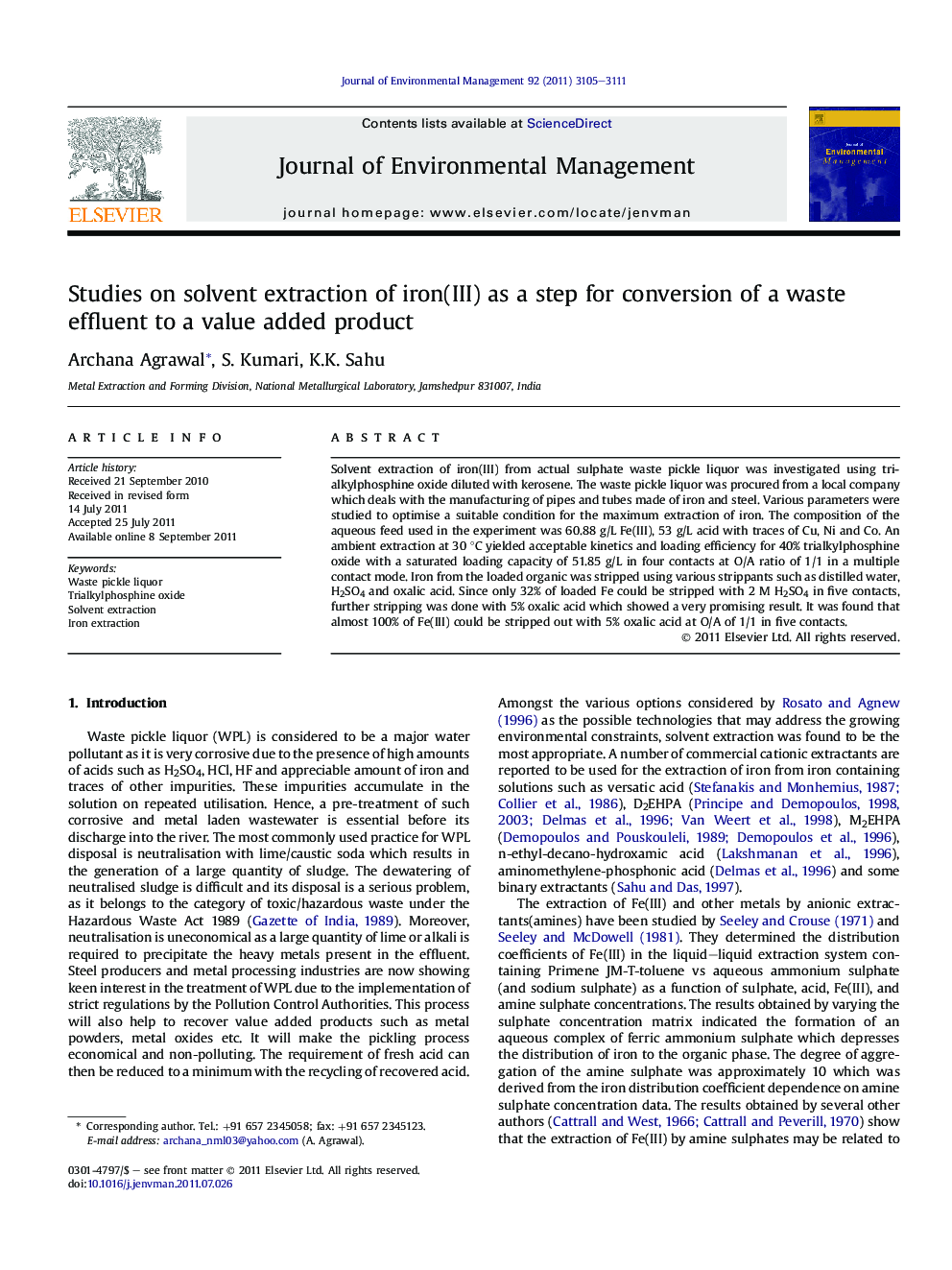| Article ID | Journal | Published Year | Pages | File Type |
|---|---|---|---|---|
| 1057114 | Journal of Environmental Management | 2011 | 7 Pages |
Solvent extraction of iron(III) from actual sulphate waste pickle liquor was investigated using trialkylphosphine oxide diluted with kerosene. The waste pickle liquor was procured from a local company which deals with the manufacturing of pipes and tubes made of iron and steel. Various parameters were studied to optimise a suitable condition for the maximum extraction of iron. The composition of the aqueous feed used in the experiment was 60.88 g/L Fe(III), 53 g/L acid with traces of Cu, Ni and Co. An ambient extraction at 30 °C yielded acceptable kinetics and loading efficiency for 40% trialkylphosphine oxide with a saturated loading capacity of 51.85 g/L in four contacts at O/A ratio of 1/1 in a multiple contact mode. Iron from the loaded organic was stripped using various strippants such as distilled water, H2SO4 and oxalic acid. Since only 32% of loaded Fe could be stripped with 2 M H2SO4 in five contacts, further stripping was done with 5% oxalic acid which showed a very promising result. It was found that almost 100% of Fe(III) could be stripped out with 5% oxalic acid at O/A of 1/1 in five contacts.
► Trialkylphosphine oxide used effectively and efficiently for Fe (III) extraction from spent pickle liquor. ► Saturated loading capacity of 40% solvent for Fe(III) extraction found to be 51.85 g/L in four contacts at O/A ratio of 1/1. ► 5% Oxalic acid disengaged 100% Fe(III) from the iron loaded organic. ► large scale studies with techno-economic assessment needs to be done for practical utility.
